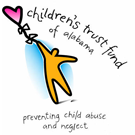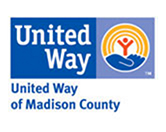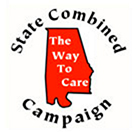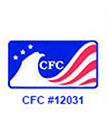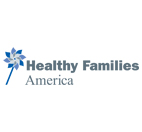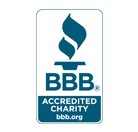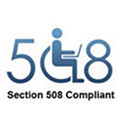Social Media Toolkit - Safe Sleep
This social media toolkit is intended to help educate parents and community members about reducing the risk of sudden infant death syndrome (SIDS). The cause of SIDS is unknown, so there is not a guaranteed method to prevent it. However, having a safe sleep environment can reduce a baby's risk of SIDS.
Social media is an outstanding tool in educating the public about child abuse prevention. Research shows that 80% of Americans believe social media is effective in raising public awareness about social issues including child safety. At least half of the adult population in the United States uses social media. Together, we can harness the power of social media to help make Alabama a safer place for our children.
The following can be linked to social media posts to add more information:
- Sleep-Related Infant Deaths: Updated 2022 Recommendations for Reducing Infant Deaths in the Sleep Environment
- How to Keep Your Sleeping Baby Safe: AAP Policy Explained
- Alabama Public Health - Safe Sleep (Financial assistance for cribs & play yards)
- CDC - Safe Sleep for Babies
- US Department of Health and Human Services - About SIDS and Safe Infant Sleep
Background from the American Academy of Pediatrics (AAP): “Each year in the United States, ∼3500 infants die of sleep-related infant deaths, including sudden infant death syndrome (SIDS) (International Classification of Diseases, 10th Revision [ICD-10] R95), ill-defined deaths (ICD-10 R99), and accidental suffocation and strangulation in bed (ICD-10 W75). After a substantial decline in sleep-related deaths in the 1990s, the overall death rate attributable to sleep-related infant deaths has remained stagnant since 2000, and disparities persist.”
Questions about this toolkit? Contact Pam Clasgens pclasgens@nationalcac.org.
Instructions
For Text: Highlight text. While text is highlighted, right click and choose copy. Navigate to social media page and in space intended for text right click the mouse and choose paste.
CLICK HERE TO DOWNLOAD GRAPHICS. Save file to computer. Upload video to social media page from saved location.
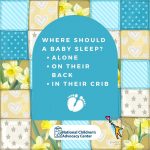
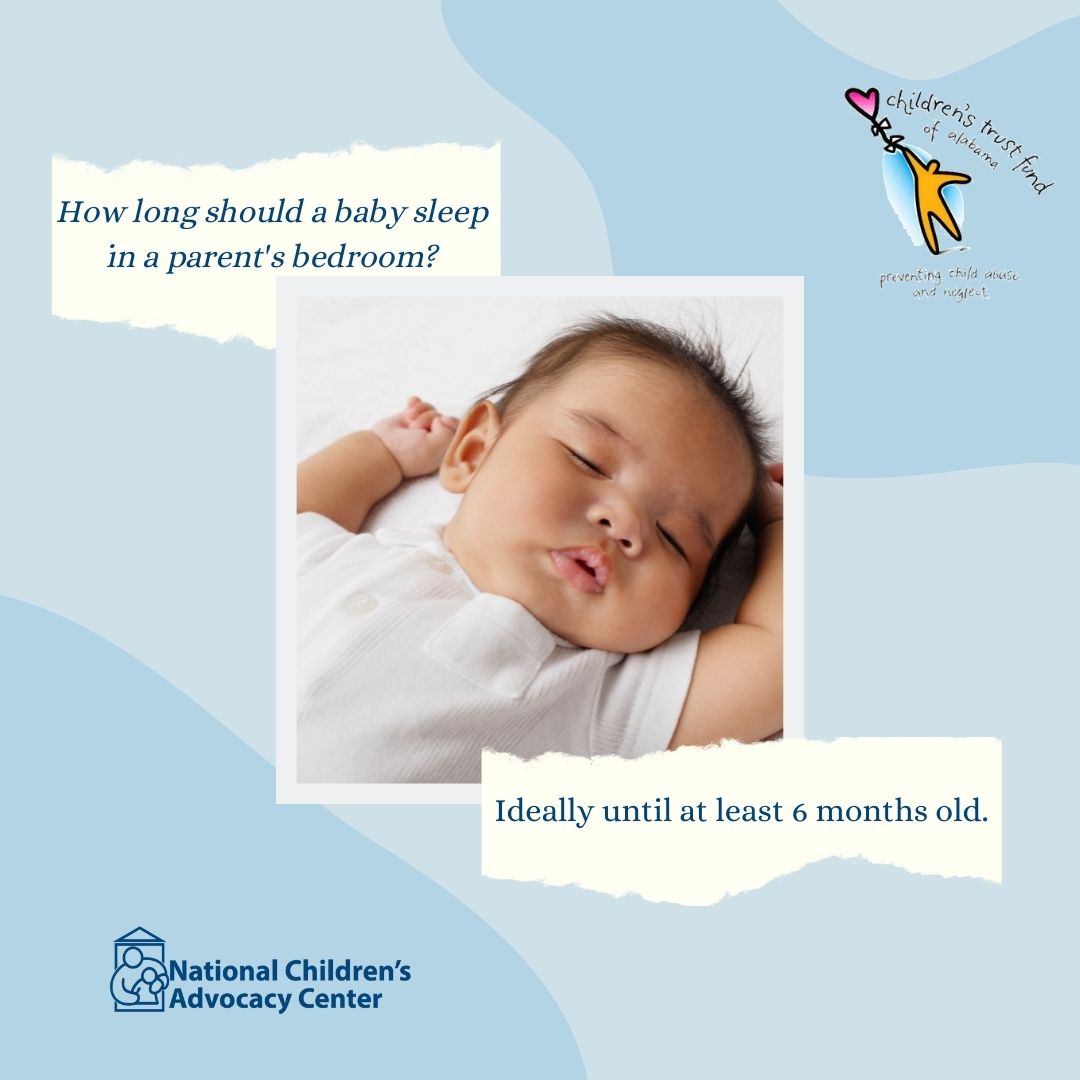

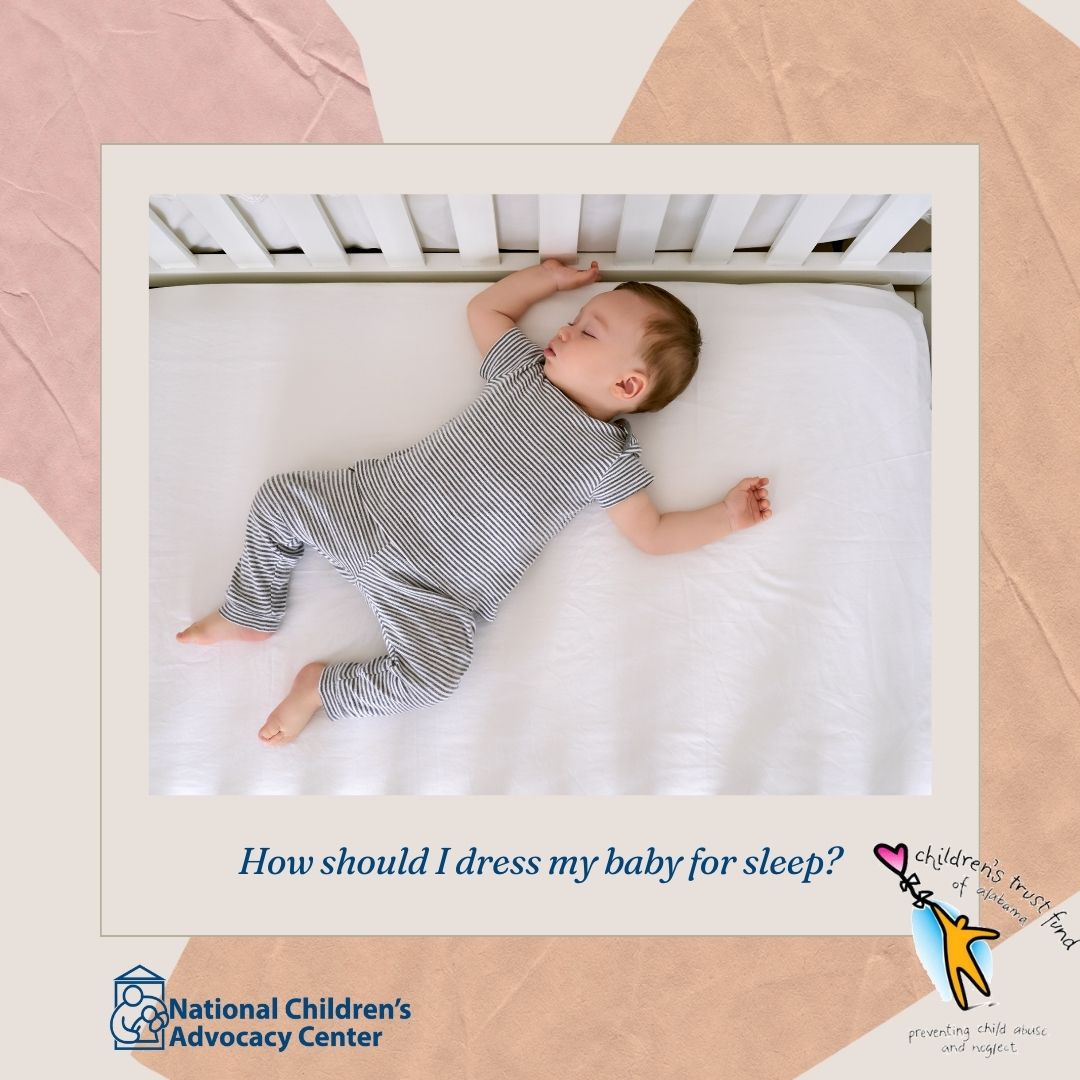
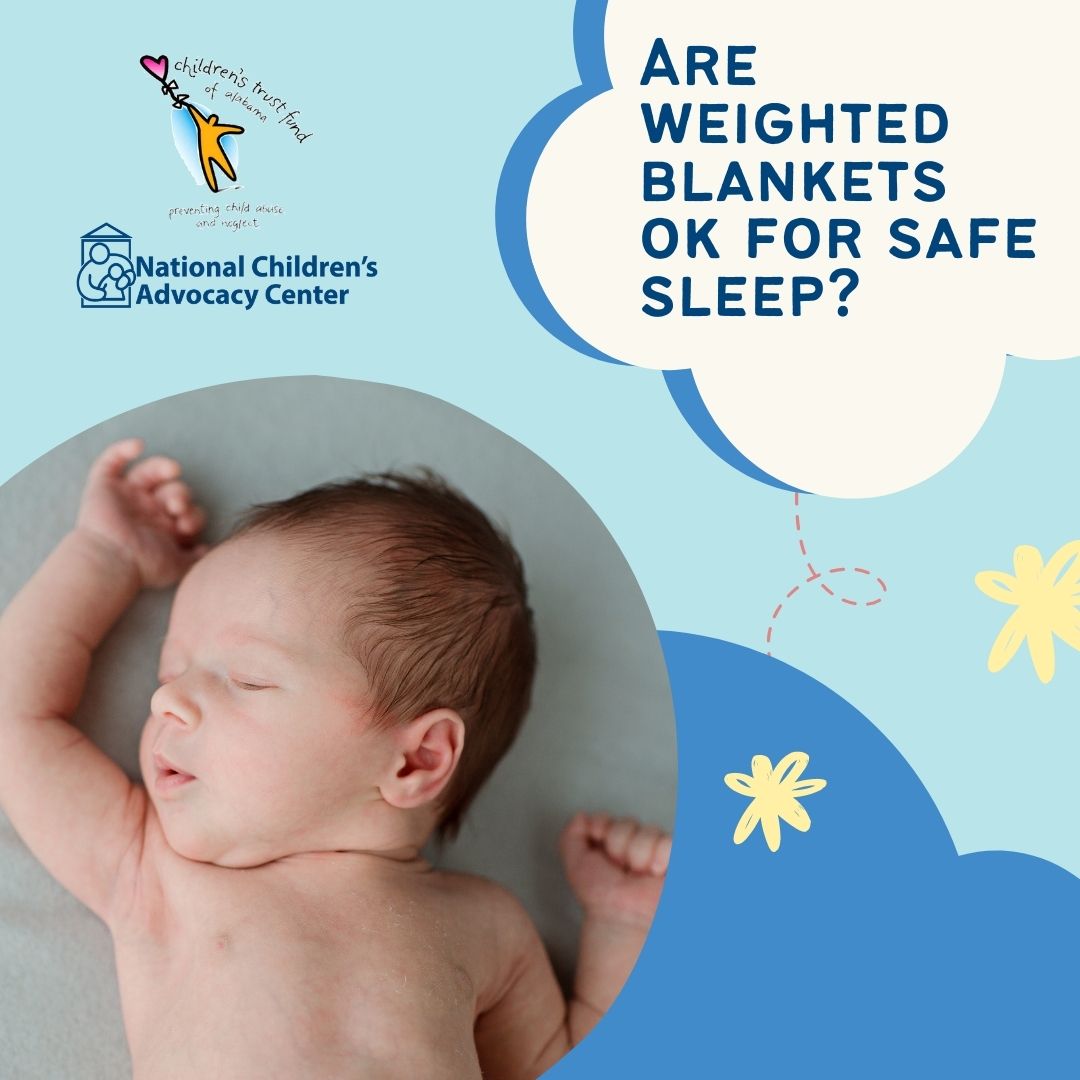
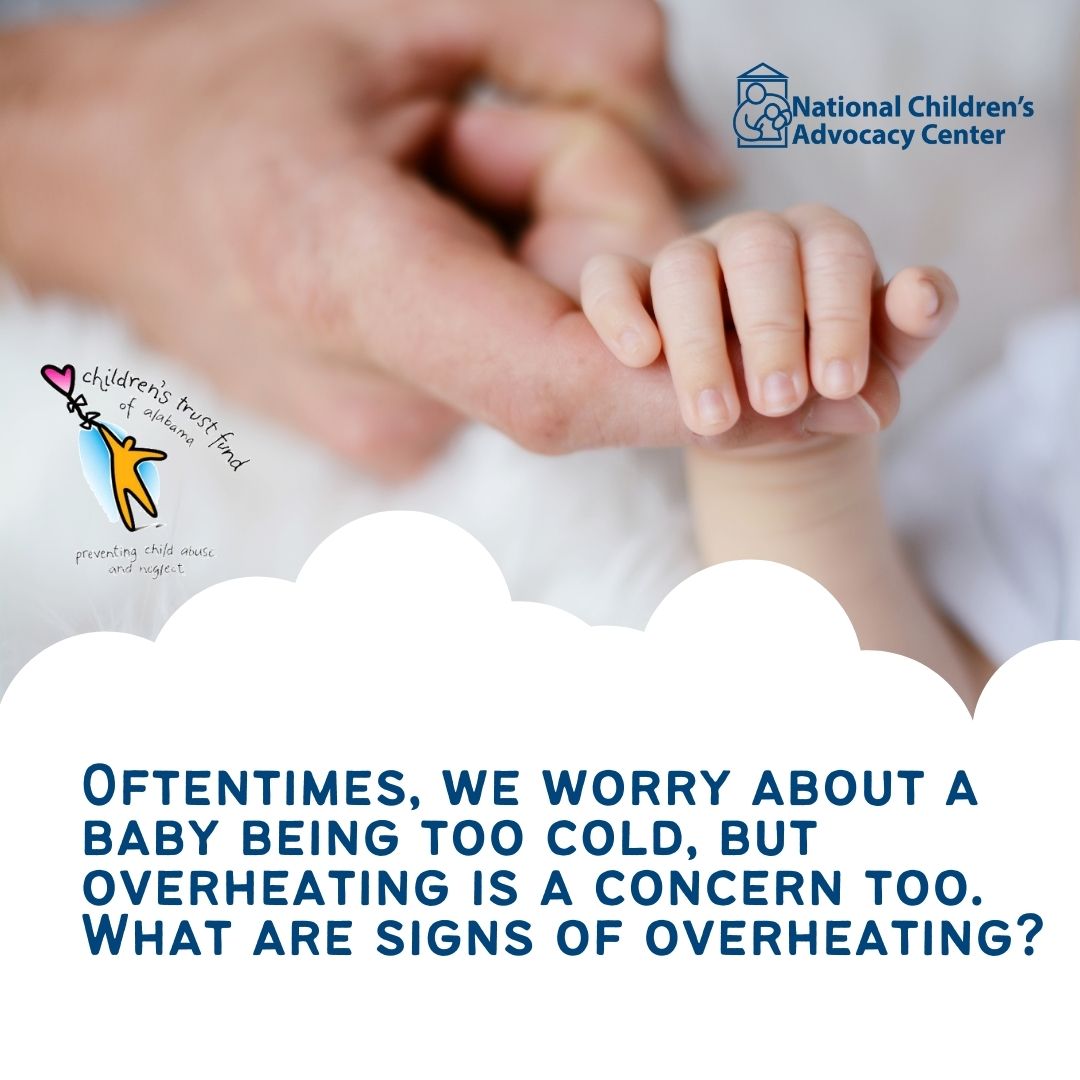
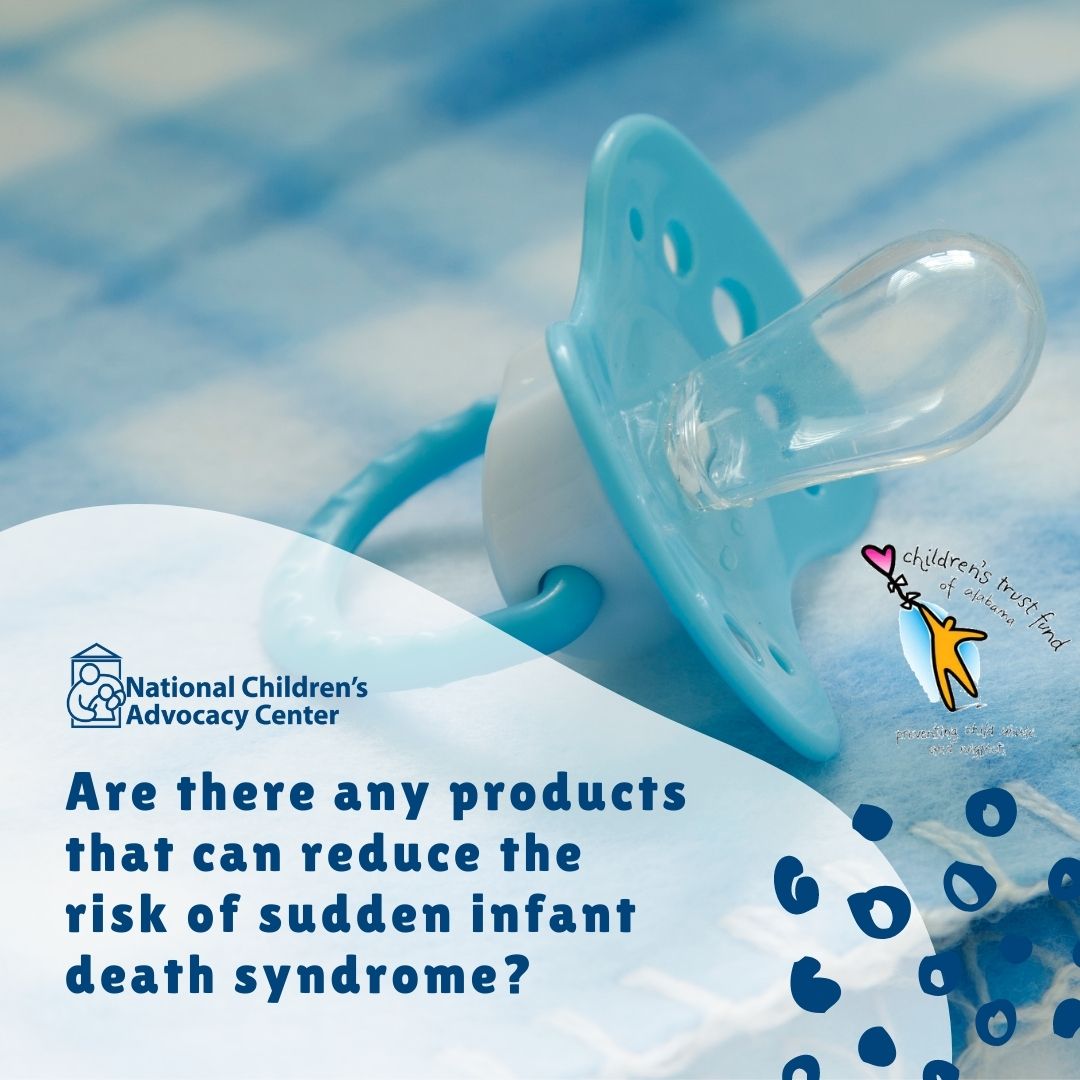

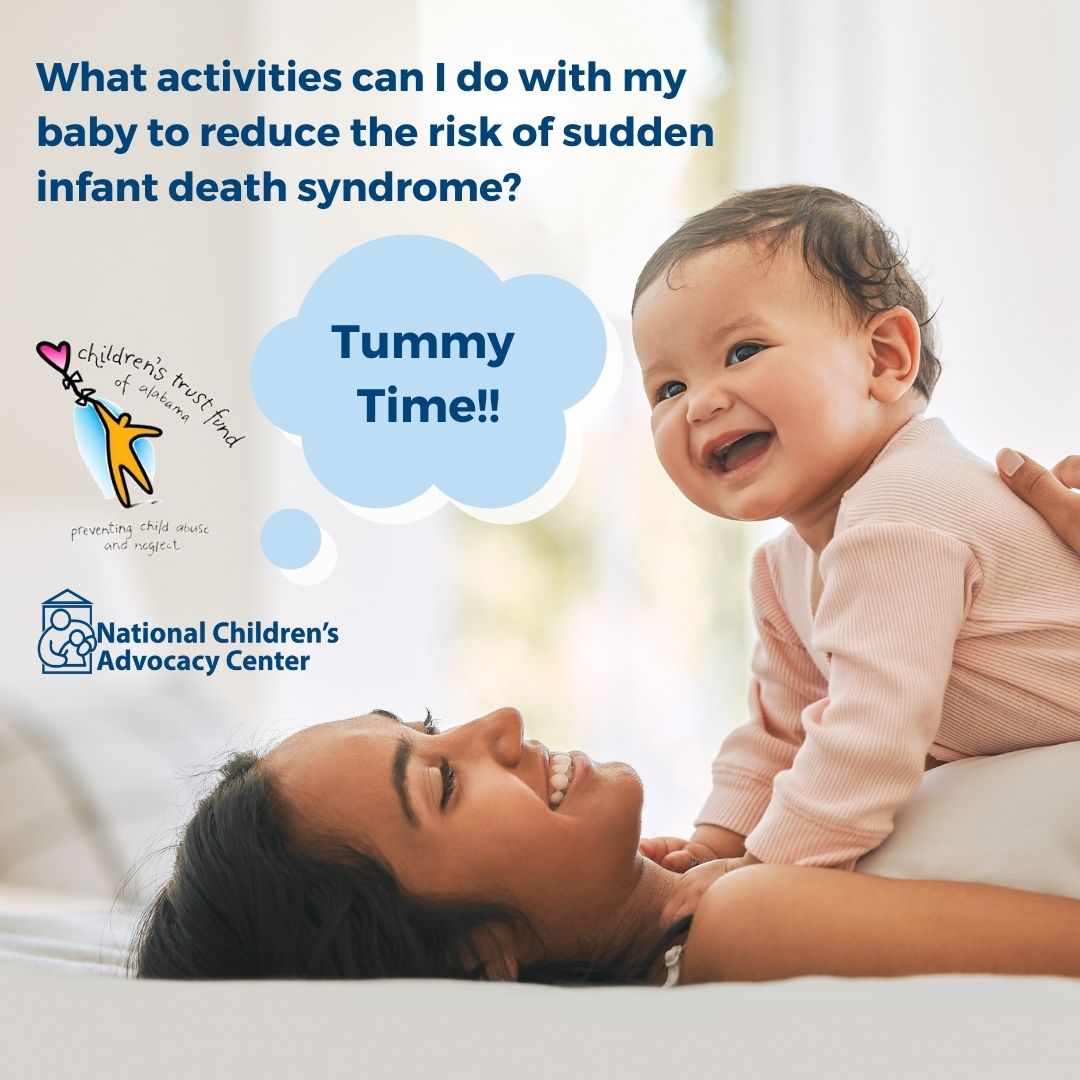
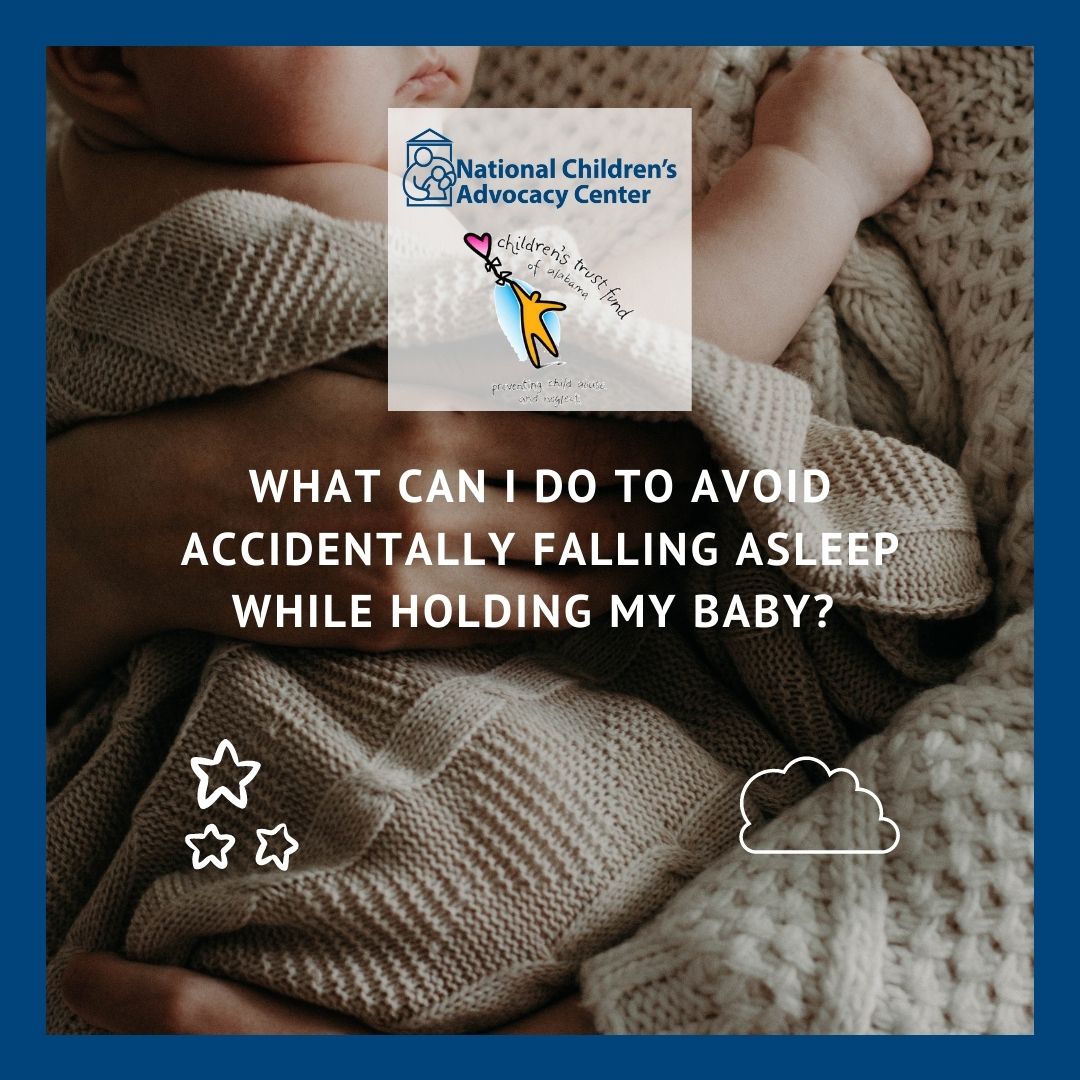
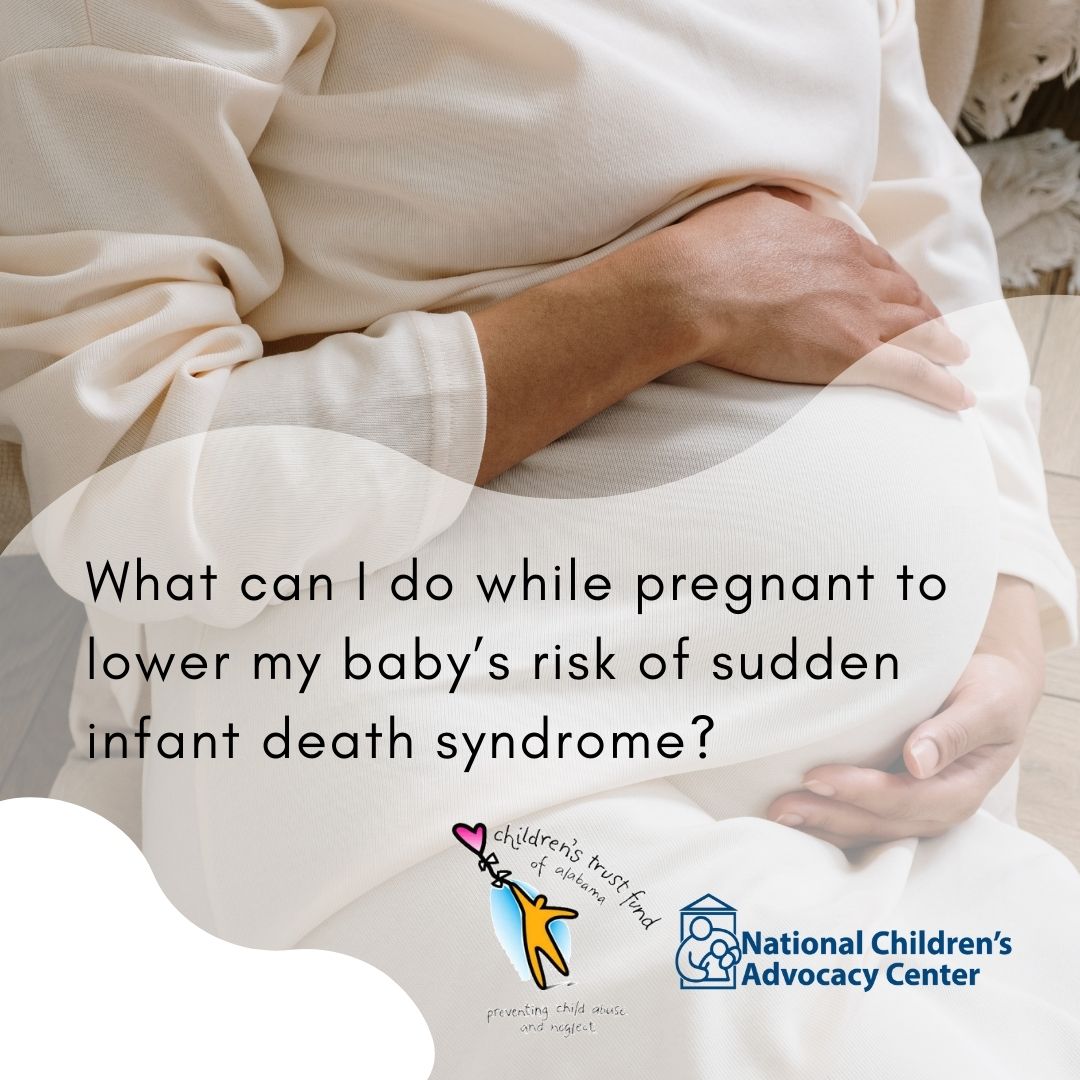
Suggested Text:
To reduce the risk of sudden infant death syndrome (SIDS), follow the ABCs of sleep:
A - alone, in their own sleep space, but in their parents’ bedroom with no toys, blankets, pillows, crib bumpers or any other soft bedding
B - placed on their back for naps & bedtime
C - in their crib or other flat, firm surface such as a bassinet or play yard
For financial assistance with a safe sleep space in AL, visit: https://www.alabamapublichealth.gov/perinatal/safe-sleep.html
For help in other states, visit: https://www.usa.gov/state-social-services
Suggested Text:
Studies show that sleeping in their parents’ room (but not in their bed) decreases the risk of sudden infant death syndrome (SIDS) by as much as 50%.
Suggested Text:
Sitting devices (car seats, strollers, swings, infant carriers, and infant slings) are not recommended for routine sleep, especially for babies less than 4 months old. If this happens, move them to a crib, bassinet, or play yard as soon as is safe and practical.
Suggested Text:
Dress babies appropriately for the temperature. Layers of clothes are preferable to blankets and other coverings to keep them warm. Use no more than one extra layer than an adult would wear comfortably. Once home from the hospital, avoid hats indoors to prevent overheating. Wearable blankets can be used.
Suggested Text:
Weighted blankets, sleepers and swaddles increase the risk of suffocation. The American Academy of Pediatrics recommends that we stop using weighted blankets, sleepers, swaddles, or other weighted objects.
Suggested Text:
Studies link overheating to sudden infant death syndrome (SIDS). Being too warm makes babies sleep so deeply that it is hard for them to wake up when needed. A baby is likely too hot if they are sweaty, have a hot chest or flushed skin. Their hair may be damp, or they may have a heat rash or rapid breathing. Remove layers of clothing to help them to cool down.
Suggested Text:
Studies have shown that using a pacifier during sleep can be protective against sudden infant death syndrome (SIDS). Don’t worry about having to replace it. The protective effect of the pacifier is still present even if the pacifier falls out of the baby’s mouth.
Suggested Text:
No, cardiorespiratory monitors have not been shown to decrease sudden infant death syndrome (SIDS). A family’s decision to use monitors at home should not be a substitute for following the American Academy of Pediatrics’ safe sleep guidelines.
Suggested Text:
Once you go home from the hospital, do supervised, awake tummy time. You can start with a few minutes each day. Gradually increase to at least 15–30 min per day by 7 weeks old. Be sure to break this into shorter segments throughout the day and make sure your baby is awake during any tummy time.
Here are some tummy time activities to try:
https://www.healthychildren.org/English/ages-stages/baby/sleep/Pages/The-Importance-of-Tummy-Time.aspx
Here's a month-by-month guide for tummy time: https://pathways.org/topics-of-development/tummy-time/
Suggested Text:
It's normal to be exhausted during night feedings. Accidentally falling asleep while feeding a baby on a couch or armchair significantly increases the risk of sudden infant death syndrome (SIDS). What extra steps can be taken to avoid falling asleep during night feedings?
- Set alarms to make sure you stay awake
- Read or watch TV to distract yourself
Suggested Text:
What can I do while pregnant to lower my baby’s risk of sudden infant death syndrome (SIDS)?
- Avoid smoke exposure, nicotine exposure, alcohol, marijuana, opioids, and illicit drug use during pregnancy (and after birth).
- Have regular prenatal care & plan to schedule well baby visits with pediatrician for immunizations.
- Learn about the benefits of breastfeeding your baby. Attend a free hospital-based class or connect with a lactation consultant. Some breastmilk is more protective than no breastmilk. If you do not want to or cannot breastfeed, you can still follow other safe sleep tips to reduce the risk of SIDS.
- Talk to everyone who will be caring for your baby about safe sleep.


